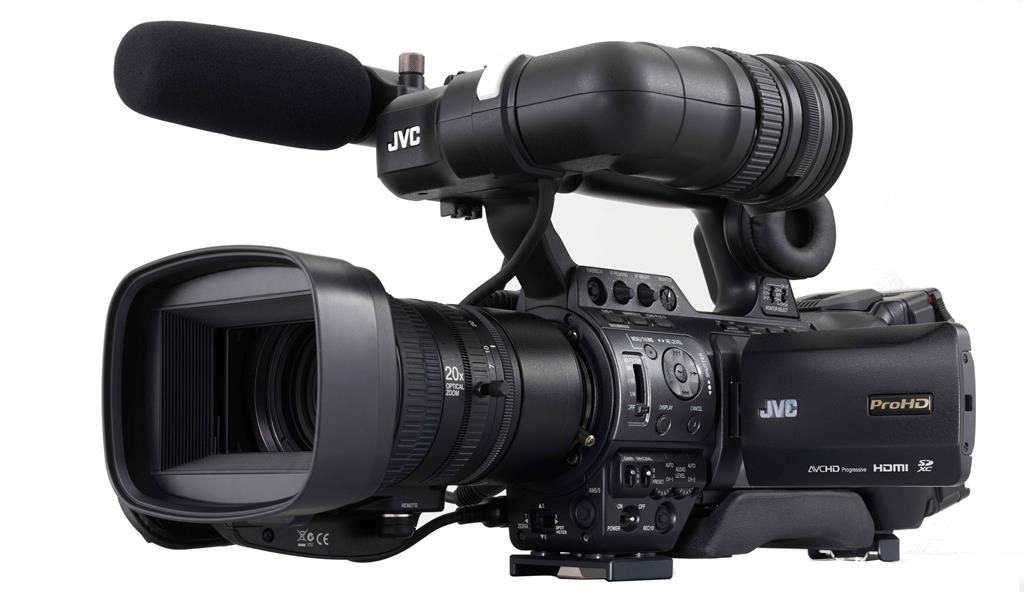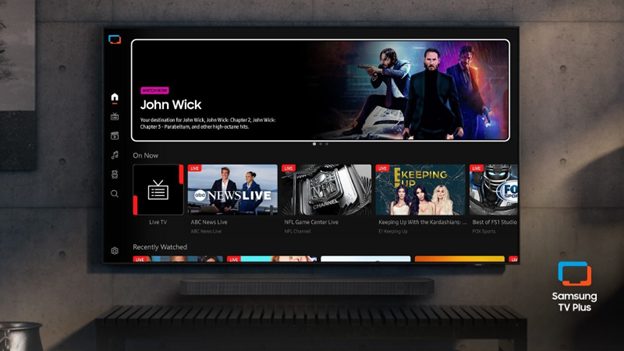JVC Extends, Enhances ENG Elements

JVC’s GY-HM850U ProHD camcorder
JVC’s aim for the 2014 is to show television news departments that there’s no reason for a news crew to go on a story without the ability to deliver a live shot back to the studio.
“What we’ve seen is that the market is very receptive to the idea of a single camera, un-bonded solution for doing live ENG,” said Dave Walton, assistant vice president, marketing communications at JVC. “And the solution that we’ve developed takes advantage of proprietary chips and codecs that we’ve been building into our handheld cameras.”
This will be introduced in the JVC booth as the new 800 Series cameras, which consists of the GY-HM890U and the GY-HM850U ProHD camcorders. “Both of these are new, shoulder mount camcorders that bring into the marketplace the communications capabilities of our handheld models that we’ve introduced over the last couple of years,” said Walton, “but with greatly expanded capability and reliability.”
MORE RELIABLE CELLULAR
JVC has partnered with Zixi LLC, a Waltham, Mass.-based encoder/decoder provider to improve the connectivity and transmission of the 800 Series cameras. “The collaboration with Zixi has allowed us to further refine the reliability of the advanced error correction and stream monitoring within the camera itself,” said Walton.
He added that where 4G service was once a rarity, “LTE signals and connections are getting so good around the country that broadcasters are now beginning to see that this is the new way of ENG.” He pointed out that one customer was quoted in the trade press as saying: “This is like having a live-truck built into the camera.”
Both the GY-HM890U and the GY-HM850U feature three, 1/3-inch 2.07 effective megapixel CMOS sensors that capture full 1920x1080 images. The imagers provide 12-bit readout, f11 sensitivity (60Hz), and a high signal-to-noise ratio. The camcorders are delivered with new Fujinon wide-angle 20x zoom lenses that feature auto focus, built-in optical image stabilization, and chromatic aberration correction. The interchangeable 1/3-inch bayonet lens also includes manual focus, zoom, and iris rings.
IDENTICAL BUT DIFFERENT
Walton explained the difference between the 850 and the 890 camcorders: “They are identical cameras with identical performance and features, with two exceptions. One is that the 890 has the ability to accept an external HD-SDI pool feed input. No other camera in this price range can do that. So you can bring in HD-SDI from another source, say it’s a pool camera, directly into the input on this camera, and not only record it directly onto memory cards, but at the same time you’re recording you can stream live.”
The second difference between the two cameras in JVC’s 800 Series is a 68-pin connector in the 890. “Both cameras have genlock and can be used with large viewfinders, etc., but only the 890 has the ability to marry up to one of our fiber and multicore options. So in that sense, the 890 is more suitable for studio operation. But the reality is that either camera can be used in the field, and either camera can be used in the studio.”
The advantages of JVC’s collaboration with Zixi begins at the camera, according to Walton. “It provides embedded forward error correction and active link monitoring, so they can actually gauge the stream and shape the bandwidth and everything else to provide the most reliable, consistent stream with a minimal amount of latency.
“And on the receive side, the broadcaster can go with a simple, Zixi-enabled decoder, or with ‘ProHD Broadcaster,’ a rackmount server which receives the stream and acts like a matrix switcher that allows you to then restream that to a variety of different devices in a variety of different formats. It also will accept the streams from multiple cameras in your facility.”
JVC has recently introduced a cloud-based service available to broadcasters by subscription. Content fed to the cloud service can then be directed to multiple destinations, including off-the-shelf HD-SDI decoders for live broadcast. “This makes it easy to manage signals for distribution, and automatic transcoding allows live, direct-to-Web content delivery to almost any content provider,” Walton said.
During exhibit hours at the JVC booth, a monitor will display live pictures from an 800 Series camcorder roaming Los Angeles to demonstrate the camera’s live-shot capability.
JVC will be in booth C4314 in Central Hall.
The professional video industry's #1 source for news, trends and product and tech information. Sign up below.
